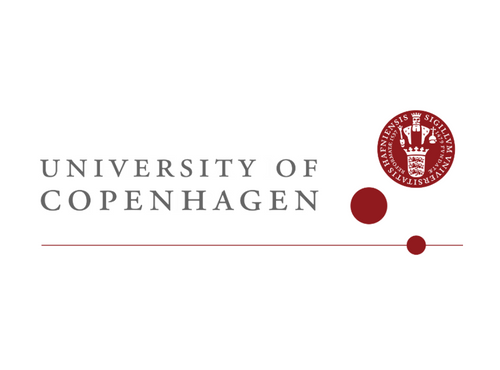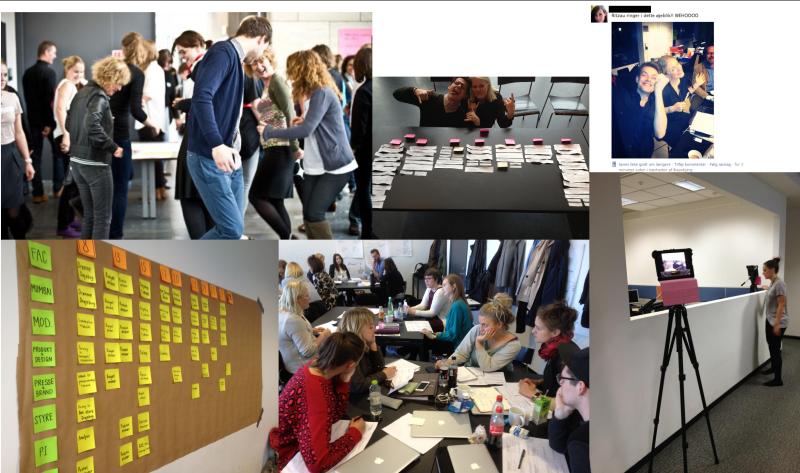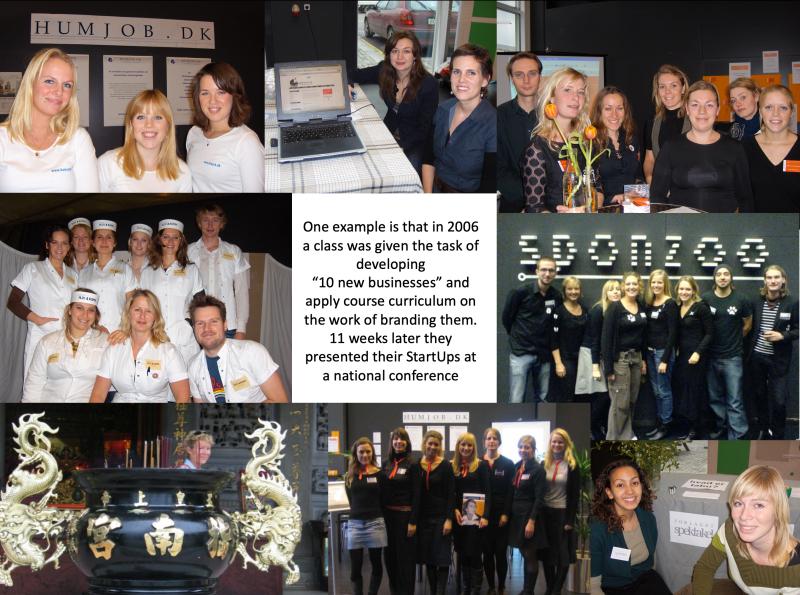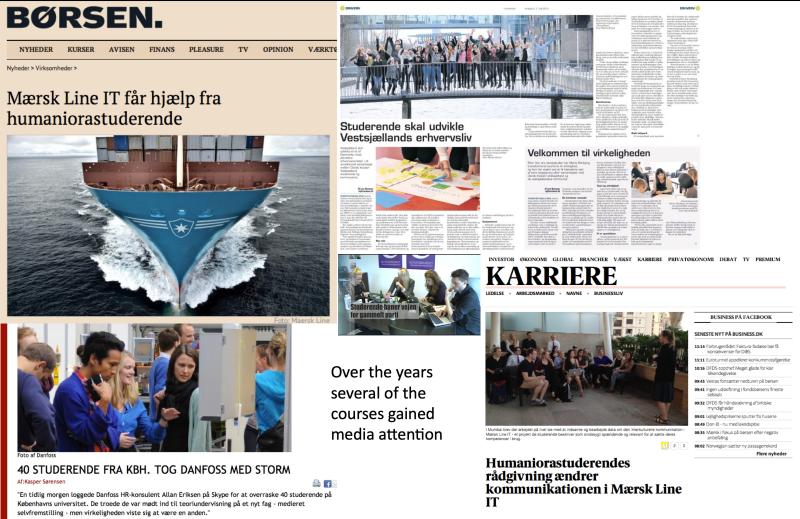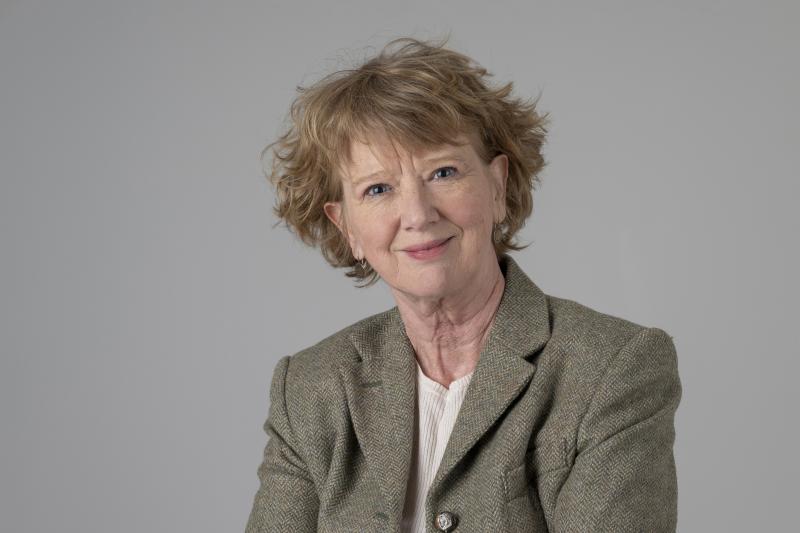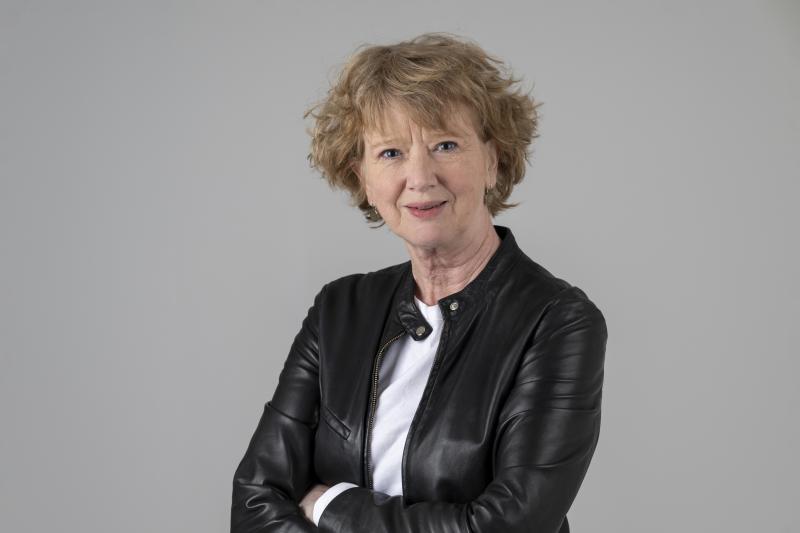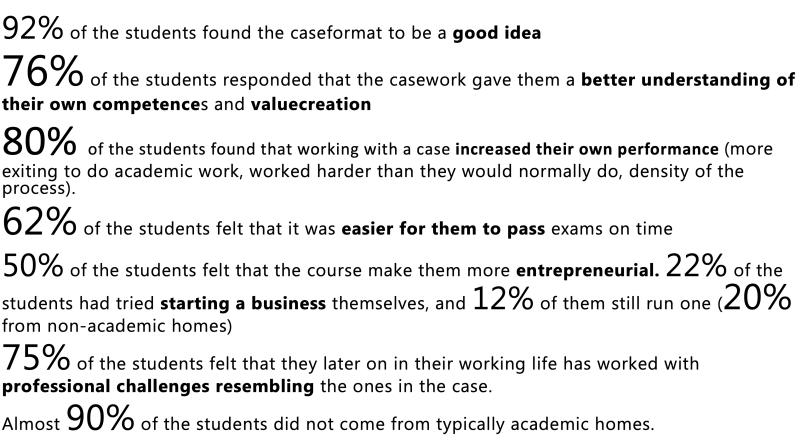AUTHENTIC (not casebook or invented never a textbook case or a hypothetical example) cases from INDUSTRY partners (private companies, public institutions and NGOs) that are MEGA (complex and so big that a single student or a small group of students cannot solve it themselves) are used to integrate theory and practice, curriculum and class teaching. It is never the point that the students have to compete with each other to give the best bid for a solution. On the contrary, the point is that they have to work cross-functionally in class and collaborate with the external business partner to succeed in the work. The students work in different teams, each of which is responsible for different corners of the case, and they have to work with the other teams to achieve the common goal together.
Examples of challenges presented for students of communication and culture include:
• Identify how two companies can be more innovative by improving meeting formats
• Create a communication strategy for an NGO to become more visible
• Create an employer branding strategy for an international corporation aiming at recruiting professionals to academic jobs in rural areas
• Collaborate with Confederation of Danish Industry and six Danish municipalities on creating a region brand as an attractive growth area
• Identify trouble areas and solutions for the intercultural communication in a global company
• Organize a workshop for a large municipality, with a large group of stakeholders and experts participating, on elderly people’s willingness and capabilities in using digital communication with professionals


